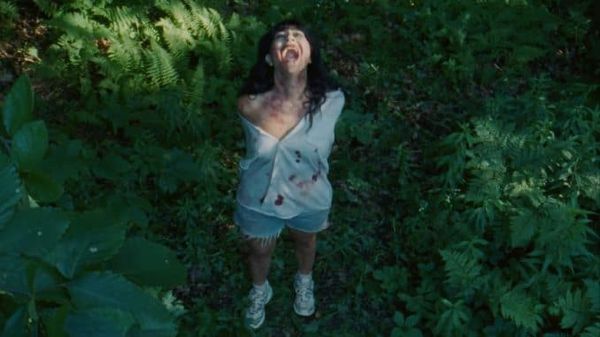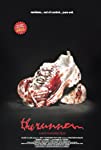Eye For Film >> Movies >> The Runner (2022) Film Review
The Runner
Reviewed by: Jennie Kermode

It opens with an electronic soundtrack which echoes the work of John Carpenter, an unusual choice for a film which acts a showcase for a contemporary darkwave band, but there’s much that is experimental about this bold little short. Whilst its appeal won’t be limited to fans of the band, Boy Harsher, it’s likely to frustrate those horror fans who go into it looking for familiar narrative structures. This is far more arty, but not self-consciously so, and directors Jae Matthews and Augustus Muller, themselves members of the band, understand the influences on which they draw well enough to avoid any embarrassment.
The story, such as it is, follows a bloodied young woman who runs through woods, stopping to scream, looking at first glance like an archetypal horror movie victim but emerging as something else. The opening shot of a man whose t-shirt is soaked through with blood sitting in an easy chair, vacantly watching TV, should give you all the clues you need. This central story is practically free of dialogue, though we see its strange heroine interacting with others in a bar, and going home with a local woman who catches her eye. Intermingled with it are scenes from a pseudo-documentary about the band and the recording of its latest album. Nothing formally connects these two threads, yet they share a common tone, and there’s tension in the ambiguity as to which is influencing the other.
All this may make more sense when you understand that Matthews was diagnosed with multiple sclerosis shortly before she made it. That’s a disconcerting, alienating experience at the best of times, and all the more so in the midst of a global pandemic when adjusting to taking immunosuppressants for the first time carries an additional layer of terror, and when public figures are continually treating the lives of chronically ill people as worthless. It’s difficult to avoid seeing parallels between Matthews’ experience and that of the film’s central character. It’s also the sort of crisis which can precipitate bursts of creativity in artists, and prompt drastically different ways of approaching familiar topics.
Artistically, the roots of this film appear to lie in the horror of the late Seventies, when a backlash against the hippy movement led to a reappraisal of cinema’s relationship with wild spaces and the wildness within human beings. The texture of the images has that roughness which suggests something raw, immediate and real, yet the very deliberate framing contradicts that impression. Many viewers will read it as dreamlike. It fits the music very well and is a classy enough piece of work to intrigue despite the slightness of its story. One hopes that this will not be Matthews and Muller’s only venture into film.
Reviewed on: 14 Jan 2022

















